Content:
- Where is the best place to plant plums?
- Planting plum.
- Pruning young trees.
- Plum care.
- Pest and disease control.

Where is the best place to plant plums?
Plum trees are best planted in moist, loamy, well-drained soils rich in nutrients. Plums planted on heavy, waterlogged, acidic, alkaline and cold soils develop poorly, often suffer from frost, and bear fruit poorly.
Heavy loams, saline soils, and dry sandy soils are unsuitable for planting this crop. On clay soil, plum roots are located superficially and do not penetrate deep into or beyond the planting hole.
Plum is a rather demanding crop regarding planting and growing conditions; it requires careful care. If the soil on your site does not meet the necessary requirements, you need to carry out deep digging, add sand, organic and mineral fertilizers.
Although plum is a moisture-loving crop, it does not tolerate excess moisture well. Groundwater should be no higher than 1.5-2 m from the soil surface. It is recommended to plant plum trees on the south side of the site. When planted in partial shade, it bears fruit very poorly.
Temperature
Plum is a relatively frost-resistant plant that tolerates mild winters well. The critical temperature that the plant can withstand for a short time is -30 ‘C.
Planting plum
When is the best time to plant? In the middle zone, it is recommended to plant plums in the spring, since during autumn planting young trees
They do not have time to fully strengthen and may freeze out in winter.
Planting pits. A landing pit with a depth of about 6 m and a diameter of 0.6 - 0.7 m. prepare in the fall or early spring, two weeks before planting. Mix the soil dug out of the hole with humus or compost and pour this mixture into the hole.Remember that you cannot add strong fertilizers to the planting hole - they can burn the roots of the tree. In addition, such fertilizing will stimulate the growth of plums to the detriment of fruiting.
Planting a seedling. Drive a peg into the middle of the hole. Place the seedling on the north side of the peg and deepen it so that the root collar of the tree is located 5-7 cm above the soil surface. Cover the roots with soil (without fertilizer) and add soil, lightly compacting it with your hands. Water the seedling generously and mulch the tree trunk with a layer of compost or peat.
Pruning a young plum
For the proper development of a tree, it is necessary to form its crown. The height of the trunk of a variety with an expanded crown is 60 cm, with a pyramidal one - 40-50 cm. After planting in the spring, the tree is shortened to 80-90 cm, subordinating the conductor and side shoots.
In most cases, the plum tree is more suitable for an improved sparsely layered crown. Instead of ordinary skeletal branches, only semi-skeletal branches are laid on the trunk. This makes it easier to replace a frozen semi-skeletal branch with a new, younger one. In this way, the tree can be maintained in a young state with healthy fruit-bearing wood.
The crown should be moderately dense, the height of the tree should not be higher than 2.5-3 m with the top open to illuminate the internal branches. When the tree reaches a height of 2.5 m, the central conductor must be gradually bent to the east, tying it to the lower branch.
Branches growing inside the crown are cut into a ring, both competitors are removed, as well as branches that form sharp angles (less than 45 degrees). Annual shoots longer than 70 cm are shortened by 1/3. Annual growths shorter than 70 cm are not shortened.Overgrown branches are thinned out so as not to thicken the crown, and the remaining ones are shortened by 1/3-1/2 of the length.
New growths should not be shortened. In case of thickening, it is better to completely remove them “to the ring” or reject them, or transfer them to side branches
How to trim a plum video:
Plum care
Plum care involves pruning, watering, fertilizing, protecting the plant from pests and diseases, loosening the tree trunk and installing supports under the branches during the ripening of the crop.
Strengthening fruit branches with supports
If the plum harvest is high and the load of fruit branches on the tree is too great, strengthen them with supports. Insulate the contact point between the support and the branch with soft cushioning material (tar paper, tow, rags, etc.). Otherwise, damage to the tree bark on the support may cause gum formation.
Taking care of the trunk circle
The tree trunk needs to be well looked after. The trunk circle of a plum tree should be at least 2 m, and it is advisable to loosen it regularly. Remove weeds promptly. Do not forget to regularly uproot root growth, as it weakens the tree and negatively affects the yield. Remove root shoots at least 4-5 times during the summer: this will significantly slow down the formation of new shoots.

Plum care. For the winter, the trunk must be wrapped with something to prevent rodents from damaging it.
Plum care: watering and mulching
One of the main components of good plum care is regular watering. During spring and summer, water the plum tree 3-5 times at the rate of 3-4 buckets of water per 1 m2. Of course, the intensity of irrigation is directly dependent on weather conditions, the age of the trees, and the timing of fruit ripening. Watering is most required after flowering, during the period of fruit set and intensive growth of ovaries. And during the period of fruit growth - after the formation of seeds is completed, at this time the plum also needs watering.
After watering, mulch the soil with dry soil, cardboard scraps, wood shavings or straw to prevent moisture loss from the subsoil.
Fertilizing plums.
Feeding trees is of great importance in caring for plums. In the first 2-3 years after planting, the tree receives enough nutrients added to the planting hole. After this time, regularly apply mineral and organic fertilizers to the tree trunk circle.
Using green manure when caring for plums. Planting green manure in tree trunk circles every 2-3 years has a positive effect on plum trees. The best are mustard, phacelia, winter rye, and vetch. When planted in autumn (August 15-20), winter rye serves as a good green cover for the soil and protects the root system from winter damage. Summer green manures are planted in mid-July. Winter green manures are planted in the soil in early May, summer green manures - during their flowering period - in the fall.
The use of green fertilizers when caring for trees is very effective; it replaces the application of manure and improves the physical and nutritional properties of the soil. It also promotes the development of the root system and the entire tree, increasing immunity and, of course, yield.
Fertilizing with mineral fertilizers. In addition to the organic matter that the plum should receive every year, the plum consumes a lot of phosphorus and potassium. In intermediate years, mineral fertilizers are applied. In April, 10 days before flowering - 15-20 g of urea per square meter. m, in May, after flowering - 18-20 g of double superphosphate + 30 g of potassium sulfate, 15 g of urea per square meter.m of tree trunk circle.
Using organic matter when caring for plums. In addition to mineral fertilizers, slurry diluted with water 3-5 times and bird droppings (10 times) are used for fertilizing. You can do foliar feeding with mineral and microfertilizers. Spring feeding: 80 g of urea, 100-200 g of potassium sulfate, 200-300 g of superphosphate are diluted in 10 liters of water.
It is not recommended to use the same fertilizer throughout the season. When applying fertilizing, keep in mind that in sunny and warm weather, all fertilizers are absorbed by the tree faster. If the weather is cloudy and cold, the absorption of fertilizers is much slower and fertilizing needs to be done less frequently.
Pest and disease control
Pests and diseases cause great harm to plum trees. Without timely and regular implementation of protective measures, it is impossible to obtain a full harvest. Sanitary and preventive measures, control of pests and diseases of plums must be carried out according to the phases of plant development that coincide with the most vulnerable phases of pest development.
In the spring, before the buds open, remove and burn overwintered pest nests (dried, including on cobwebs). Collect and burn dried fruits in the crown and under the tree. Thoroughly spray the crowns with N30 (500 g per 10 liters of water). This spraying is aimed against Californian scale insects, eggs of aphids and mites, roseate leaf roller, fruit moth caterpillars and pathogens of fungal diseases.
The period from the beginning of bud break to the end of flowering: on the white bud - spraying with one of the insecticides (fufanon-nova, alatar, aktar) with the addition of homa and abiga-pik. This treatment is against sawfly larvae, mites, aphids, and leaf-eating pests.Against diseases, you can add sulfur (100 g).
Summer period. We carried out 3-4 sprayings with an interval of 2 weeks against the plum moth, mites, fungal pathogens: preparations Fufanon-Nova or Fitoverm + Abiga-Pik (30 ml) or Chorus (3 g per 10 L of water).
Autumn period. Collect and burn fallen fruits, nests of pests in the crown (dried leaves).
If you carry out the entire system of protective measures, add to them the necessary agricultural technology and careful care, you can hope for a good plum harvest.
Why plums don't bear fruit, video:
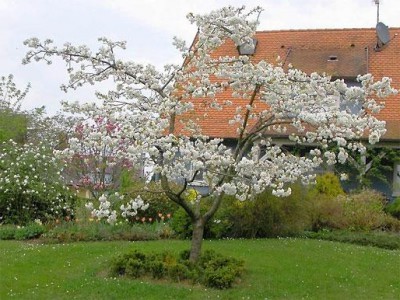
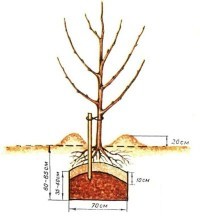
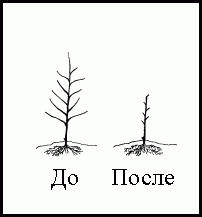
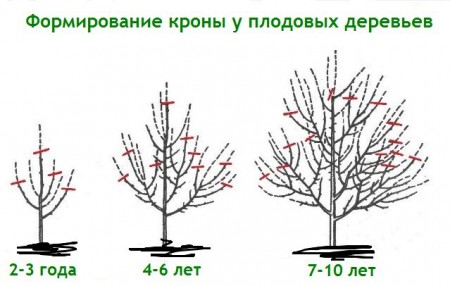
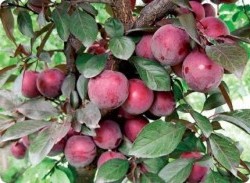
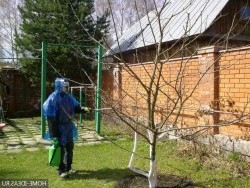

 (4 ratings, average: 4,00 out of 5)
(4 ratings, average: 4,00 out of 5) CUCUMBERS NEVER GET SICK, I'VE BEEN USING ONLY THIS FOR 40 YEARS! I SHARE A SECRET WITH YOU, CUCUMBERS ARE LIKE THE PICTURE!
CUCUMBERS NEVER GET SICK, I'VE BEEN USING ONLY THIS FOR 40 YEARS! I SHARE A SECRET WITH YOU, CUCUMBERS ARE LIKE THE PICTURE! You can dig a bucket of potatoes from each bush. Do you think these are fairy tales? Watch the video
You can dig a bucket of potatoes from each bush. Do you think these are fairy tales? Watch the video
 How our fellow gardeners work in Korea. There is a lot to learn and just fun to watch.
How our fellow gardeners work in Korea. There is a lot to learn and just fun to watch. Eye trainer. The author claims that with daily viewing, vision is restored. They don't charge money for views.
Eye trainer. The author claims that with daily viewing, vision is restored. They don't charge money for views. A 3-ingredient cake recipe in 30 minutes is better than Napoleon. Simple and very tasty.
A 3-ingredient cake recipe in 30 minutes is better than Napoleon. Simple and very tasty. Therapeutic exercises for cervical osteochondrosis. A complete set of exercises.
Therapeutic exercises for cervical osteochondrosis. A complete set of exercises. Which indoor plants match your zodiac sign?
Which indoor plants match your zodiac sign? What about them? Excursion to German dachas.
What about them? Excursion to German dachas.